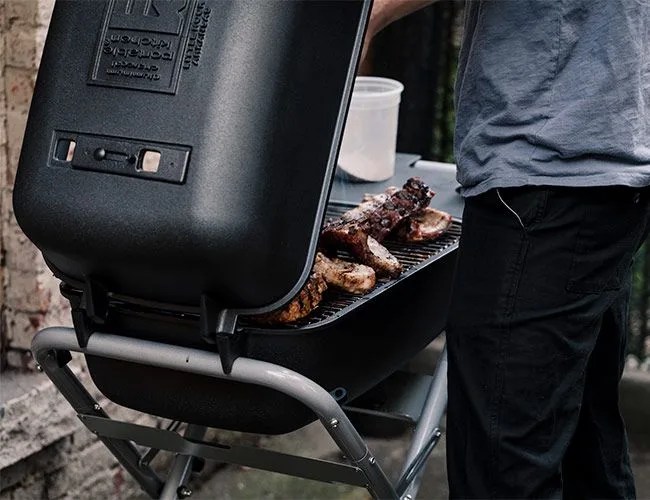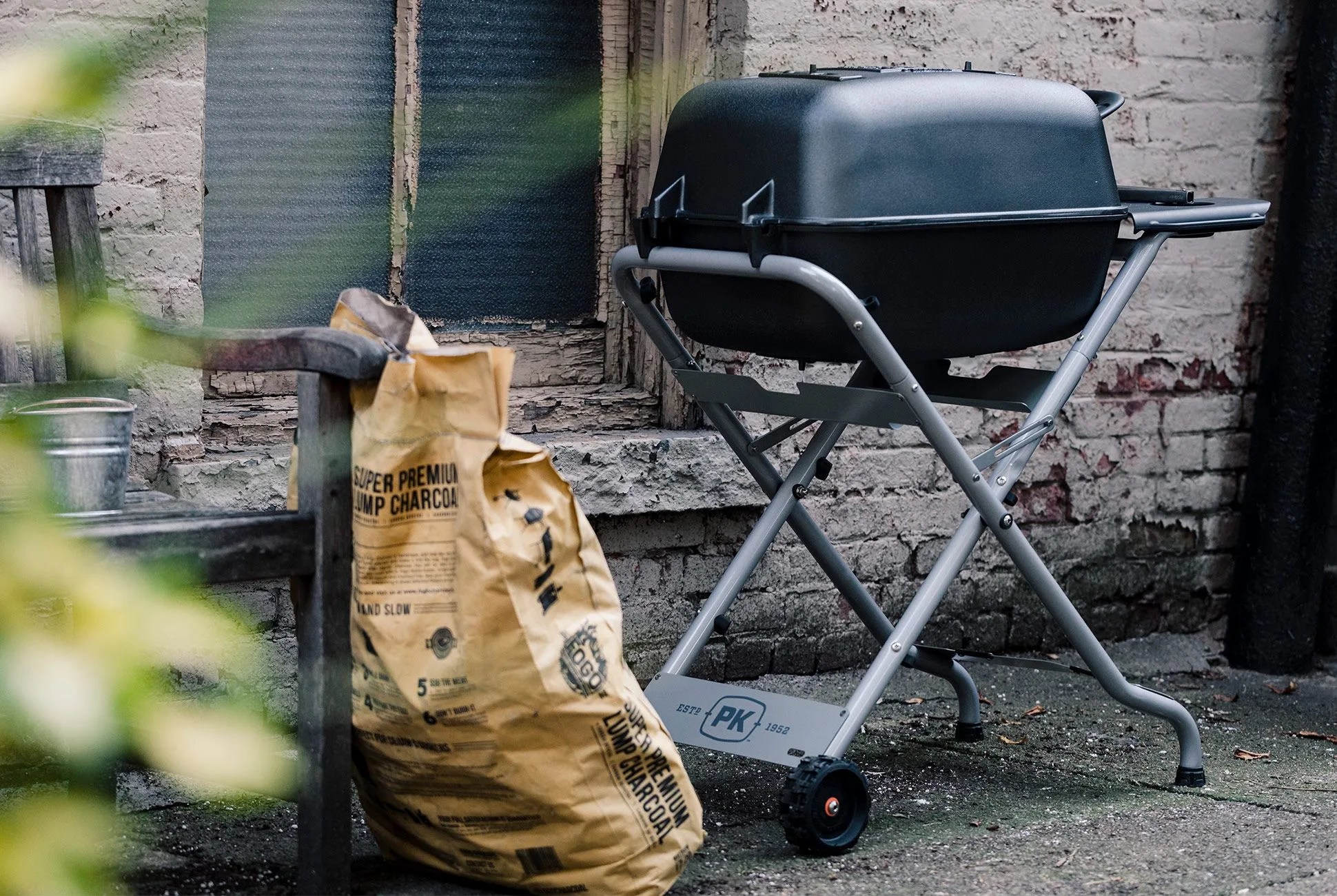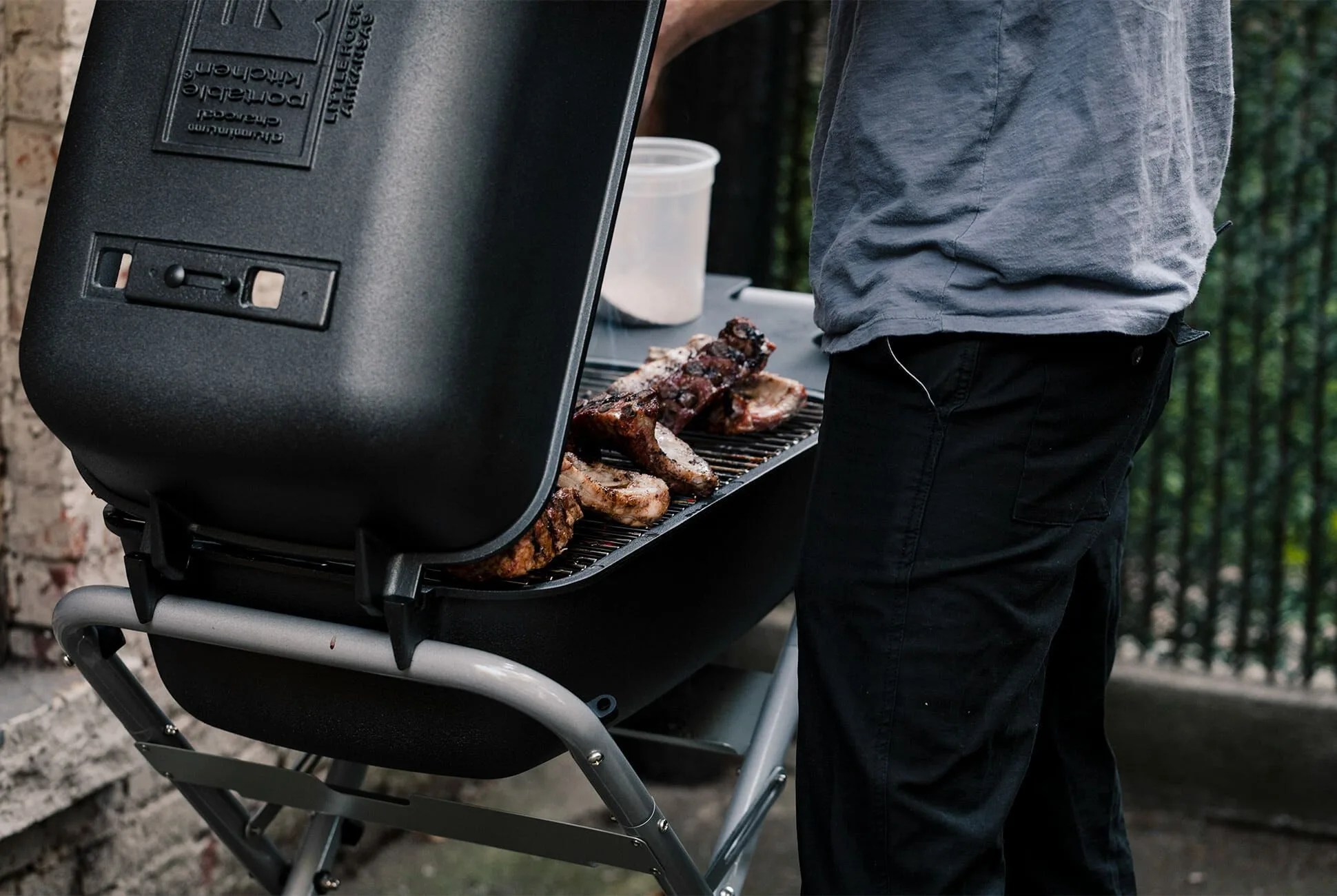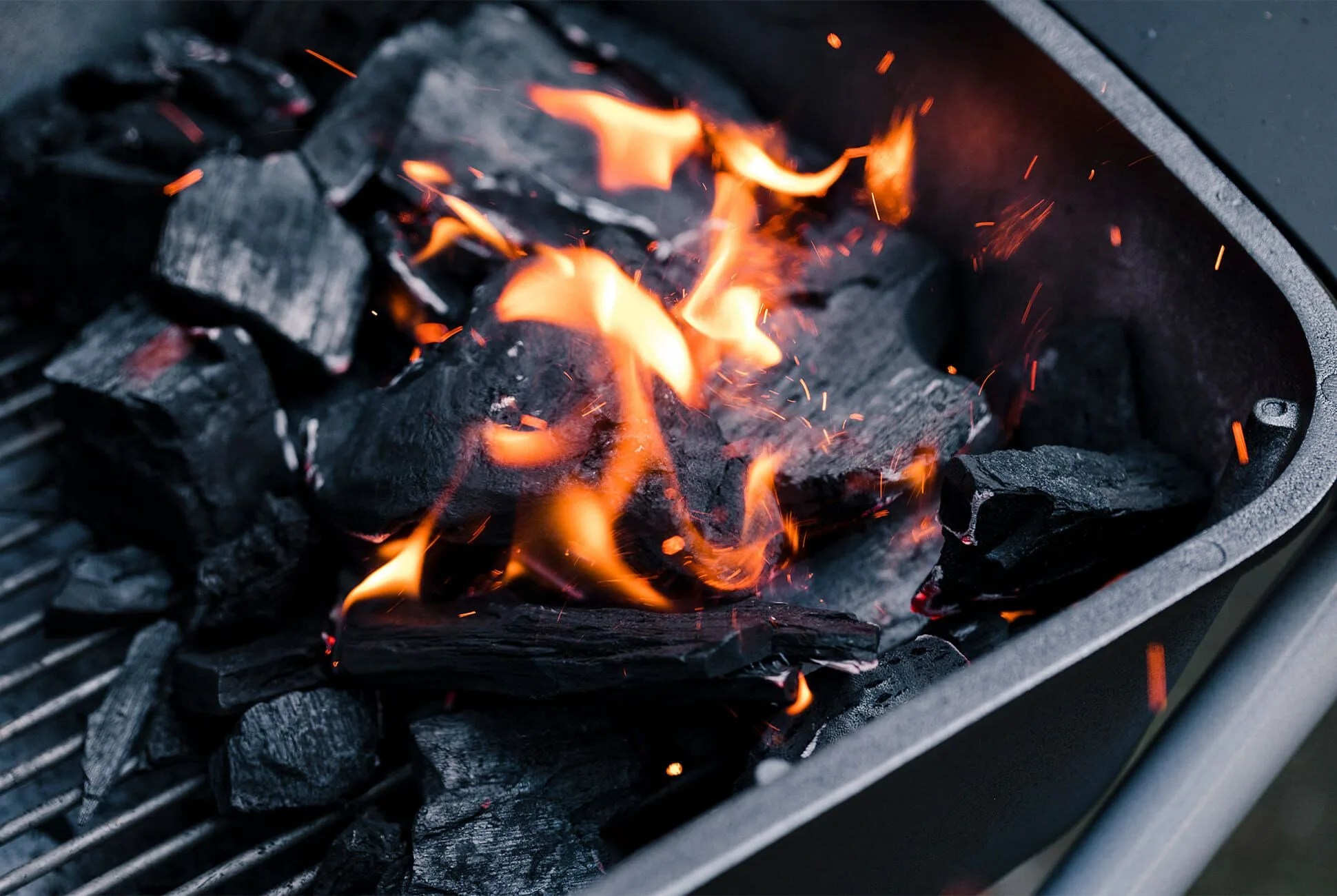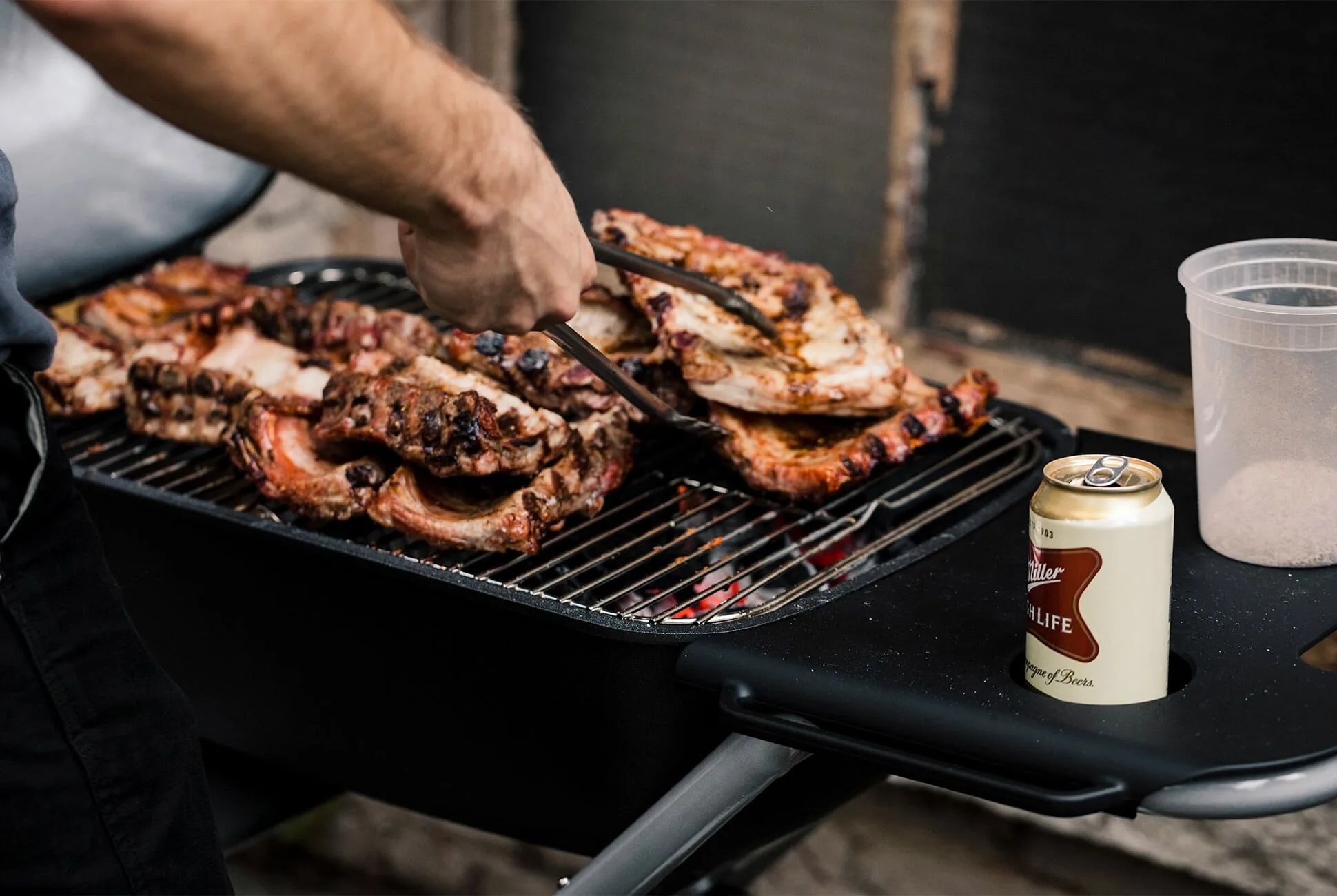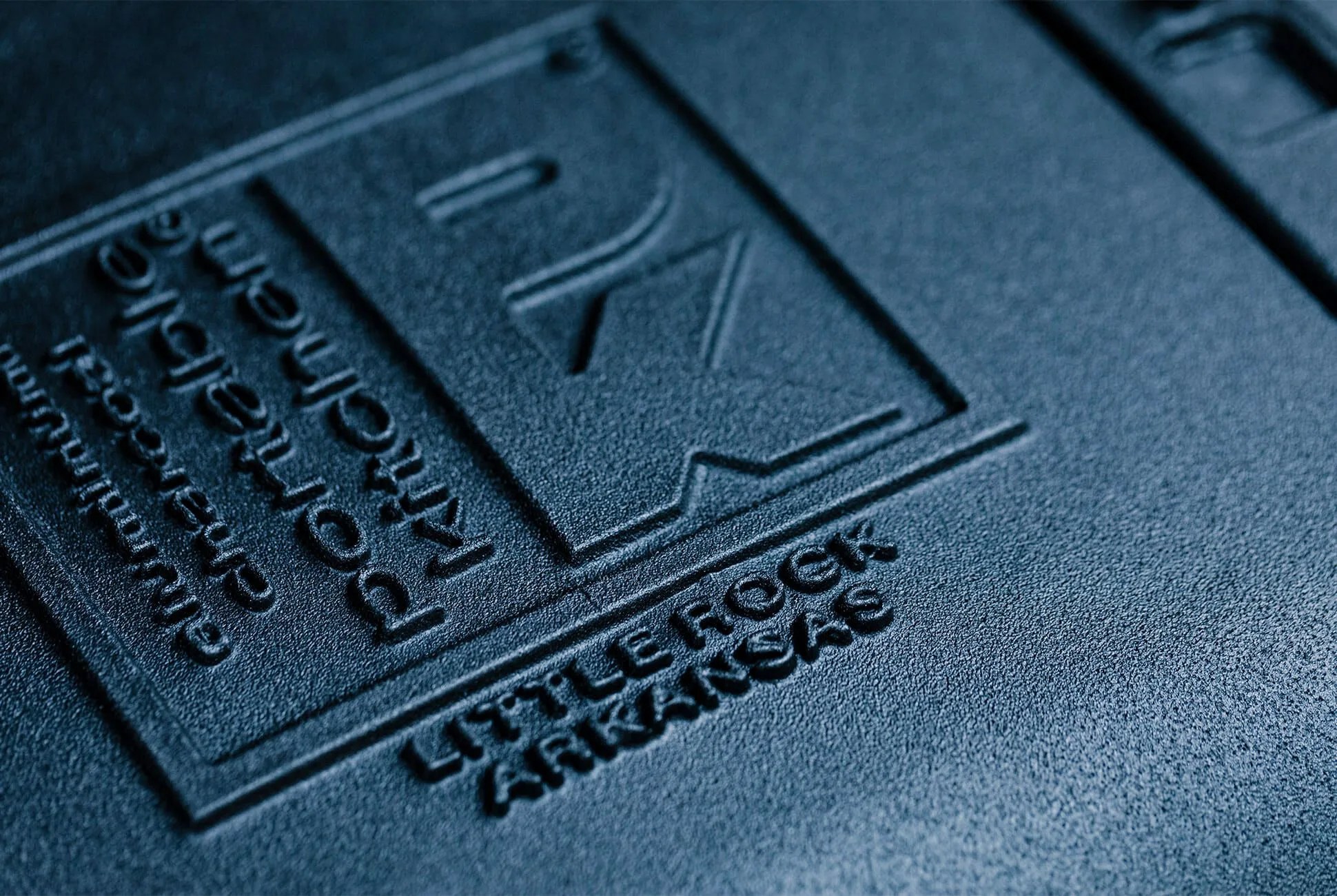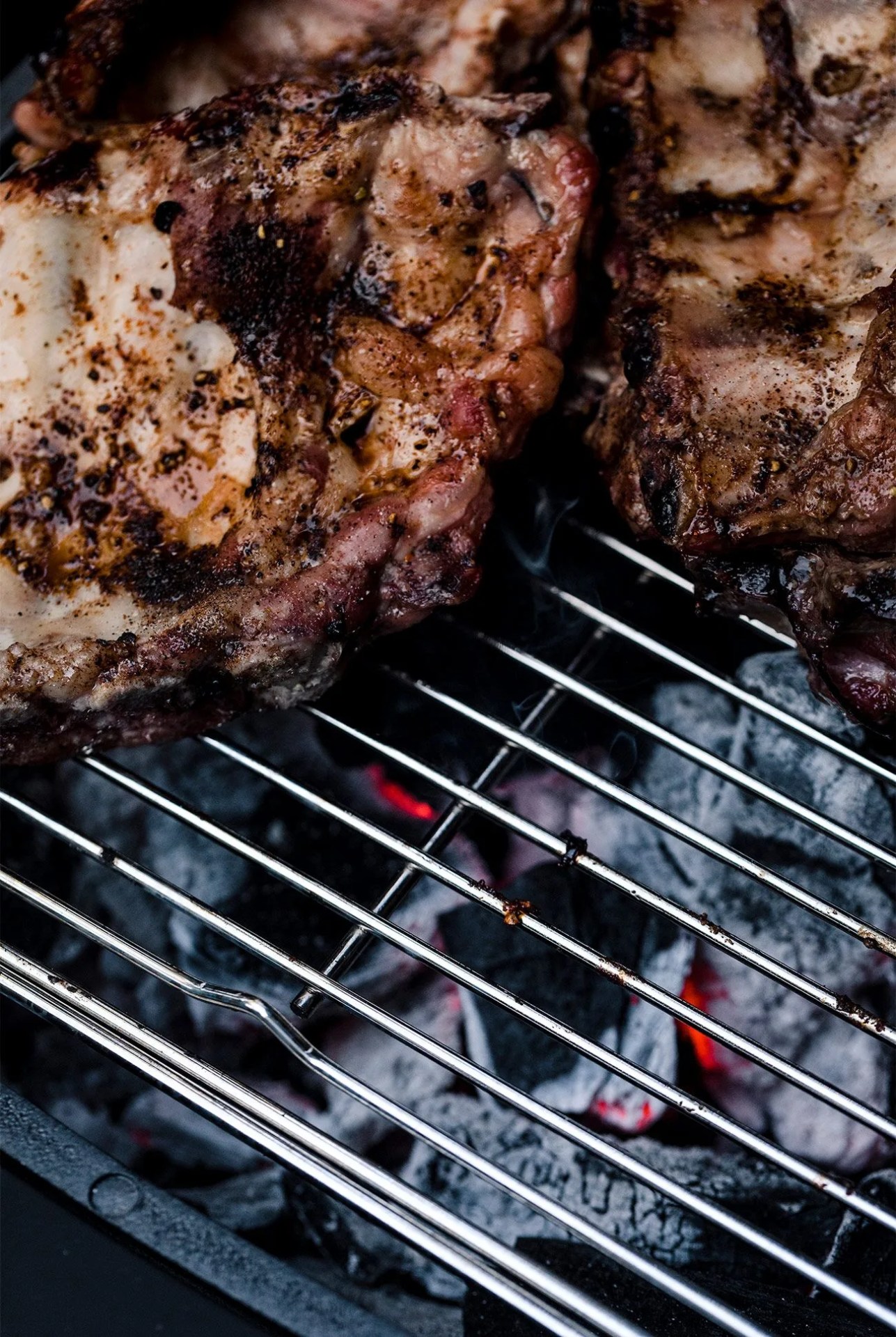5 photos
The design of PK’s grills is basically unchanged since the originals were made in 1952 by one Hilton Meigs. The idea was, and remains, simple — the grill capsule’s shape, use of cast aluminum and four-point vent system makes for a tougher-than-shit charcoal grill that’s easy to use and almost impossible to damage or corrode.
The original grill gained popularity among home and professional smokers, even attracting attention from the U.S. Army, who apparently ordered more than 20,000 back in the ’50s. The company, then called Portable Kitchen (hence, PK), went virtually defunct in the ’70s thanks to the surge of propane gas grills at the time. About a decade ago, an Arkansas native bought up the IP and started making them again, launching the first new-retro grill in 2016. The PKTX, which uses the same grill capsule as the original but adds a folding body for easy transport, is its newest product.
It’s a very premium stab at the compact, portable grill market — an area that could use more non-chintzy, non-gimmicky products. The PKTX shuns both chintz and gimmick, but is it worth the $400 price tag? I tested one to find out.
The Good: To my mind its greatest selling point is low-maintenance combined with a lot of cooking potential. Its aluminum body makes it virtually rust-proof and far lighter weight than you’d expect; it folds down pretty easily and there’s just not a whole lot of tiny parts that can break or wear away.
PK’s four-point vent system is simple to understand and use. It’s also effectively mobile, but remains still more of a tailgate or pre-prepped campsite option rather than a proper portable grill. Its compact size makes for a pretty stellar grill to accompany a tiny backyard as well. Most high-heat cooking endeavors are as simple as any quality charcoal grill — the aluminum body maintains temperatures to a much better degree than its steel counterparts.
